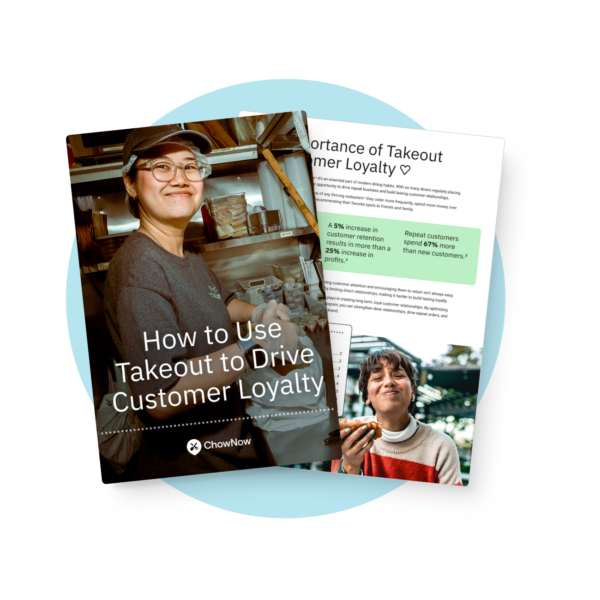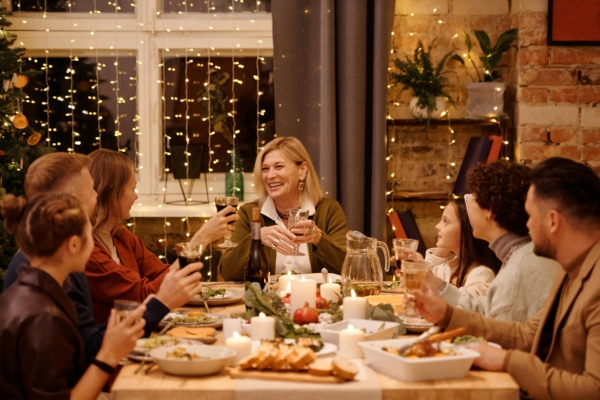Restaurant Marketing Trends: What Every Operator Should Know In 2026

In this guide, we’re breaking down the restaurant marketing trends of 2026 with actionable insights so you and your marketing team can stay ahead of the curve.
You don’t need a massive marketing budget or complicated marketing strategies—you just need to know what works and what to focus on next so you can decide where to spend your time and resources.
When you’re done reading, you’ll know which marketing strategies are worth prioritizing, how they connect to repeat business and brand loyalty, and where the biggest opportunities are to boost sales and attract new customers in the year ahead.
If you’re looking for a simple, practical way to cut through the noise and make smarter decisions about your restaurant marketing, you’re in the right place.
The State Of Restaurant Marketing In 2026
The way restaurants connect with guests is changing—and fast.
Diners no longer react to generic marketing. To grab their attention, you need restaurant marketing that reflects their habits and their preferences—not a one-size-fits-all message.
Diners’ expectations have changed
Customers expect their dining experience to be a lot like shopping on Amazon—fast, personalized, and aligned with their preferences.
Diners will discover you on social media, explore your restaurant website, and place an order through your online ordering system—often within minutes. If at any point they hit friction, they’ll bail, and you’ll lose out on a new customer and potential repeat business.
You can deliver on customer expectations by:
- Prioritizing smooth digital pathways from discovery to purchase
- Communicate consistently with tools like email marketing or sms marketing
- Tailor offers or messaging based on customer preferences
These details create reliable customer experiences that increase customer satisfaction and organically boost sales.
Every restaurant is adopting technology now
Independent restaurants are now using tools once reserved for large chains. A neighborhood coffee shop can implement automated email marketing or launch a simple loyalty program.
If every restaurant has the same tools, then tech is no longer the differentiator—it’s the results that come from using them:
- Higher brand loyalty
- More repeat visits
- Increased customer lifetime value
The goal now is not to do more marketing, but to do the right kinds of marketing well.
Why staying ahead matters
The real cost of ignoring new restaurant marketing ideas is visibility. Diners have more choices than ever, and the attention naturally goes to restaurants that show up consistently with a clear, recognizable message.
The restaurants gaining traction aren’t just posting more often or adding more tools—they’re strengthening their brand voice, investing in channels they control like their website and email list, and building simple systems that elevate the customer experience from the first touchpoint to the repeat visit.
If recent years were about adapting to rapid change, this year is about refinement.
Operators are focusing on what works, letting go of what doesn’t, and doubling down on the channels that build relationships—not just reach.
AI-Driven Personalization Will Shape Guest Experiences
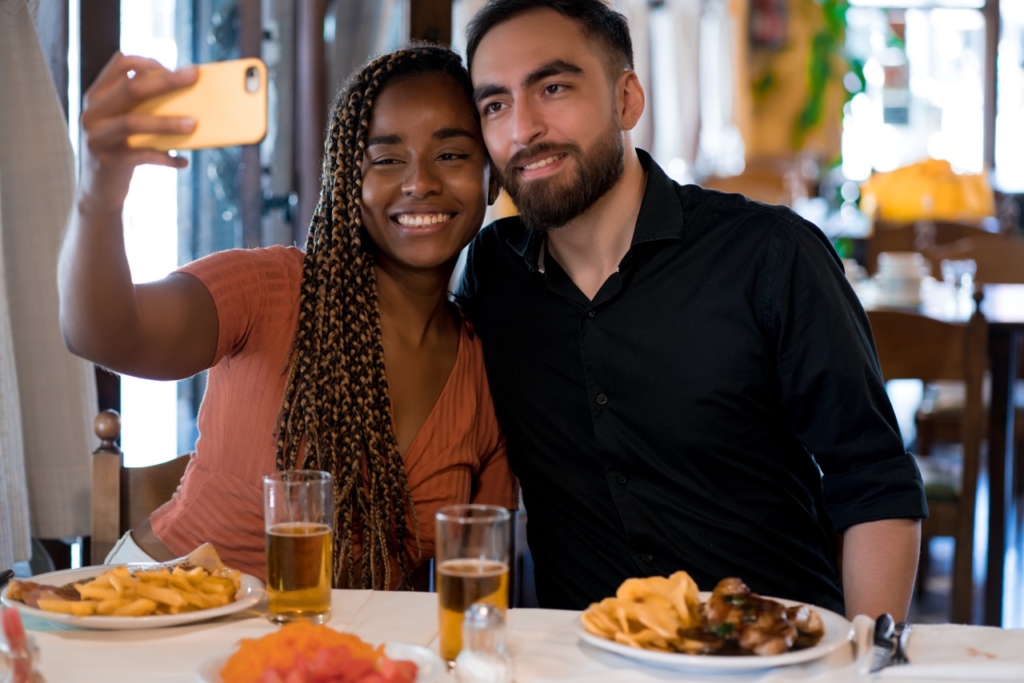
Diners want to feel recognized, and they want restaurants to anticipate what they like. AI makes this possible in a way that makes your restaurant marketing strategy easier.
Personalization is the new standard
When potential customers interact with your restaurant marketing, they want options that match their preferences, not a generic promotion that’s supposed to appeal to everyone.
AI can analyze purchase history and behavior, segmenting diners into relevant groups such as new customers, regulars, or lapsed guests, allowing operators to run personalized marketing campaigns that feel tailored and intentional.
Instead of pushing broad marketing campaigns, more restaurant operators are shifting toward targeted campaigns that reach the right people at the right time.
Personalization creates a connection that drives revenue and loyalty
When a restaurant recognizes a returning guest, such as with a warm welcome back or a reminder to return, it fosters genuine brand loyalty.
That’s when loyalty programs become more than just a way to hand out discounts; they become a tool that builds relationships, leading to more repeat visits and higher customer satisfaction.
AI will never replace hospitality, but it does enhance it. It helps your team deliver better experiences, makes marketing tasks easier, and gives you more time to focus on serving delicious food and building community.
Local Targeting Will Get More Precise
One of the most important shifts in restaurant marketing trends is the move toward local-first marketing. Instead of trying to reach everyone, restaurants are focusing on the people most likely to walk through their doors.
In the restaurant industry, relevance matters more than reach, and nothing is more relevant than your own neighborhood.
Local marketing feels more authentic and personal
Consumers have developed a preference for supporting local businesses that contribute to the community. When a restaurant highlights partnerships with local farmers, features neighbors on social media, or promotes special events happening nearby, it stops feeling like a business and starts feeling like part of the neighborhood.
Restaurant owners are using local storytelling to fuel their restaurant marketing and marketing strategies.
For example:
- Showing which ingredients come from local farmers
- Spotlighting seasonal menu items
- Sharing behind-the-scenes moments on their social media accounts
Posts that feel genuine consistently outperform overly polished content, especially when restaurants leverage user-generated content from happy diners.
Digital channels make local targeting even easier
Even though diners are an active part of your neighborhood, they still turn to online sources to discover new restaurants through search and maps, which makes optimizing for local SEO crucial.
If your business profile on Google has inaccurate details or outdated photos, you may lose a potential customer before they even see your digital storefront.

Restaurants that excel at getting discovered by locals online consistently:
- Respond to positive reviews across multiple platforms
- Update their business profile with current hours, photos, and menu items
- Share engaging posts and videos on social media to drive social media engagement
Focusing your marketing efforts on local discovery, like your Google Business Profile, online directories, search maps, and social media, performs better and costs less than broad paid ads, and it’s easier to see your return.
Local targeting creates better results
A local-first restaurant marketing strategy leads to stronger community connections and better performance from marketing campaigns. It gives operators endless restaurant marketing ideas without needing a large budget.
And when locals feel connected to the mission, they don’t just try the restaurant—they come back again and again.
Sustainability Will Become a Brand Expectation
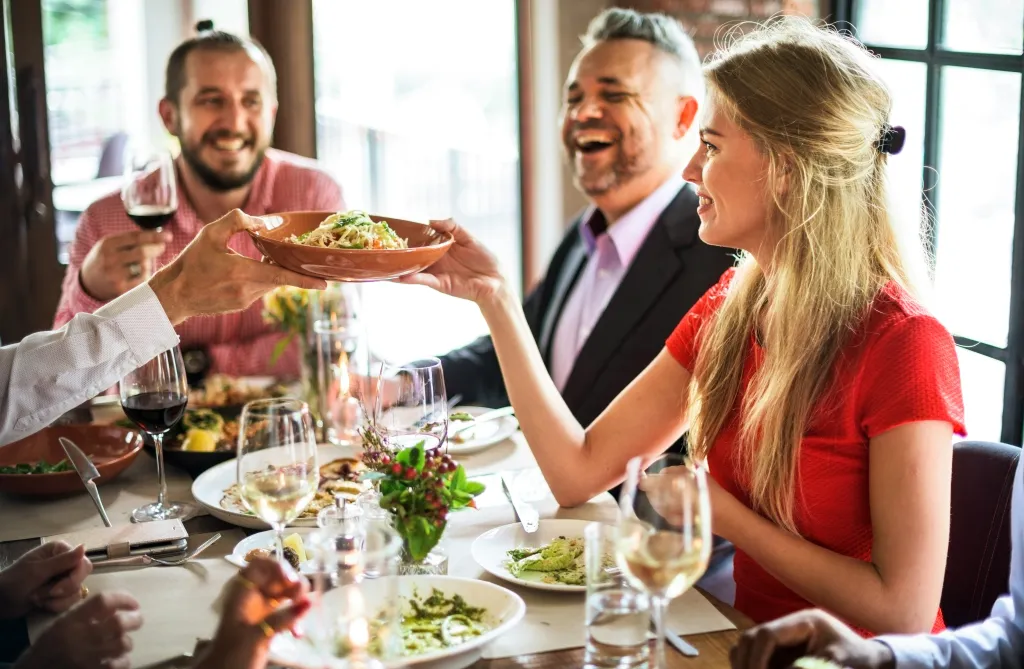
Society in general is moving toward choices that benefit the planet, which means diners are no longer choosing where to eat based solely on taste or convenience—they’re also considering restaurants that align with their values.
Sustainability is a restaurant marketing trend that will continue to influence how operators promote their mission, their menu, and their connection to the community.
Let’s look at how you can use it to build more loyal customers.
Diners want to see firsthand that your restaurant shares their values
People are actively seeking out local businesses that are thoughtful about ingredients, sourcing, and waste. They want to know that the restaurant isn’t just talking about sustainability, but taking visible action—be it partnering with local farmers, reducing packaging, or minimizing food waste behind the scenes.
What matters most isn’t perfection—it’s transparency. Guests want to see the effort.
This allows operators to openly share their sustainability practices in an open, honest, and compelling way. Every step can become part of your restaurant marketing strategy, especially on social media, email marketing, and your restaurant website.
Sustainability creates stronger marketing storytelling
Sustainable practices don’t just look good; they give you something to talk about. Instead of promotion after promotion, operators can share how their sustainability affects and benefits the community
Here are a few successful restaurant marketing ideas that translate well to marketing ideas:
- Showcasing seasonal menu items tied to harvest cycles
- Documenting efforts to reduce food waste through partnerships or donations
- Highlighting supplier relationships, especially with local farmers
Done right, this storytelling builds emotional connection and reinforces your brand’s identity in a memorable way.
Sustainability drives long-term brand equity
Operators who communicate their efforts build credibility that no discount can buy. It positions the restaurant as thoughtful, responsible, and future-minded—qualities that matter deeply to most diners.
And it snowballs.
Restaurants embracing sustainability see more positive reviews, more organic shares on social media, and more loyalty from guests who care about where their money goes.
Influencers And User-Generated Content Will Drive Trust
Diners trust what real people say and share. That shift has made influencers (and especially everyday customer content) one of the most effective ways to build credibility.
People trust people more than polished campaigns
A guest posting a photo of their meal or sharing a story about your staff carries far more weight than anything a restaurant could publish alone.
It feels real. It’s not staged. And it shows your restaurant the way diners experience it—through their eyes, not just the lens of how you’d present your restaurant.
Micro-influencers and local creators are particularly effective because their followers see them as people, not marketers. Their posts drive interest and traffic because they blend naturally into your diners’ feed.
Most shareable moments aren’t the most perfect
You don’t need elaborate staging or expensive equipment to create content people want to share. What resonates most are the moments that feel human—your team prepping a new dish, a behind-the-scenes clip of a busy night, or a quick video about an ingredient or special event.
Operators can make it easier for guests to post by:
- Encouraging photos with well-lit plating or a visually interesting spot in the restaurant
- Reposting customer content (with permission) to show real experiences
- Creating small prompts or signage inviting guests to share their visit
The goal isn’t to pressure guests into promoting the restaurant—it’s to make sharing feel effortless.
Influencers expand your reach, while customers build social proof
Influencers introduce new diners to your brand. User-generated content reinforces that what the influencer showed is actually true.
That combination of reach + proof is what drives action.
Instead of chasing an aesthetic, embrace storytelling—and remember that not everything needs to be perfect, it just needs to be real. When guests feel like they’re part of the story, they’re more likely to become a part of your restaurant’s community.
Mobile Ordering Experiences Will Continue To Evolve
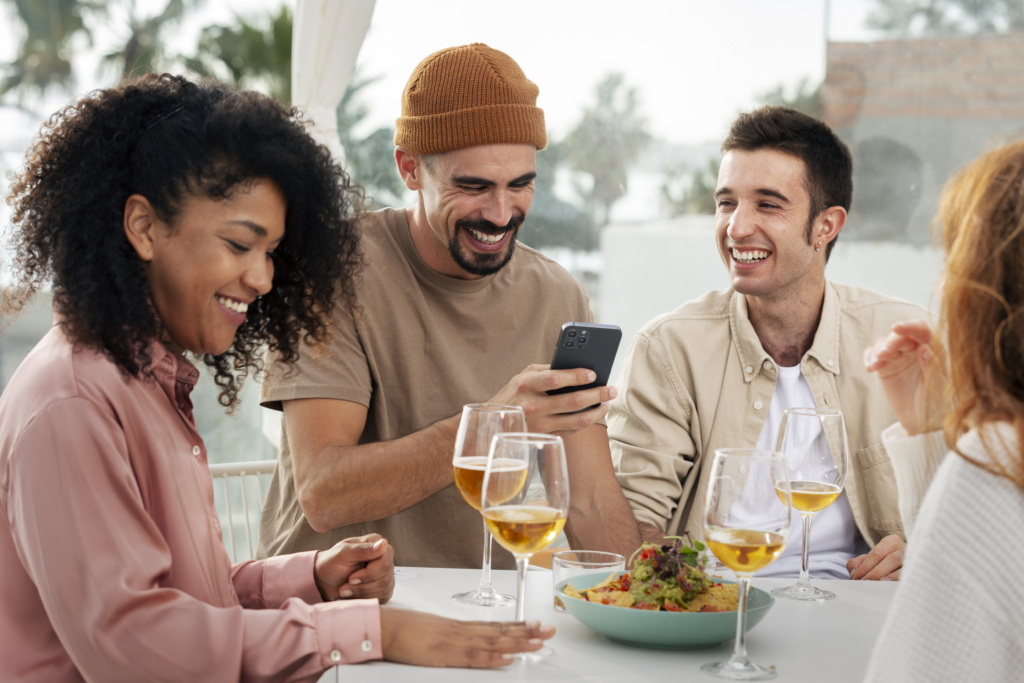
It was only a few short years ago that offering mobile ordering felt innovative. Now, it’s an expected part of the dining experience, and customers have become far less forgiving when the process is slow or confusing.
With 95% of diners saying speed is “critical” to the experience, the new standard is no longer “Can someone place an order from their phone?” It’s “How seamless, fast, and convenient does the experience feel?”
Let’s examine a few ways to ensure your mobile ordering meets diners’ expectations.
Convenience is the new competitive edge
Mobile ordering is now part of the dining journey, not a separate task. As we mentioned at the beginning of this article, diners choose where to eat fast—a scroll through your social media account, a tap through your website, and then they’re placing their order within minutes.
If anything slows them down, they’ll abandon their order without hesitation. However, convenience alone isn’t enough anymore—diners want to feel like they’re ordering directly from your restaurant, not a generic interface.
The experience should feel like your brand
Guests expect a mobile experience that feels like your restaurant business. The design, the flow, the tone, all of it should reflect the same brand presence as if they were standing in your restaurant in person.

Every branded mobile app should:
- Work well across all devices and screen sizes
- Have clear menu descriptions and properly sized images
- Integrate with loyalty programs or email lists without hassle
- Feel like a natural extension of your restaurant’s identity
- Have the same tone, language, and design as other digital touchpoints
When a guest lands on your mobile app, they should instantly know they’re in the right place, no confusion or second-guessing.
Faster ordering leads to more frequent ordering
The ability to order quickly isn’t just about convenience; it shapes customer behaviour as well.
When reordering is as simple as a few taps, it becomes a habit. Guests no longer debate where they want to order; they just order from the restaurant that makes that decision effortless.
A streamlined mobile experience reduces abandoned carts, increases order frequency, and strengthens repeat behavior—not because of discounts or promotions, but because it’s easy.
The fewer decisions a diner has to make, the more often they’ll order.
How Operators Can Future-Proof Their Marketing
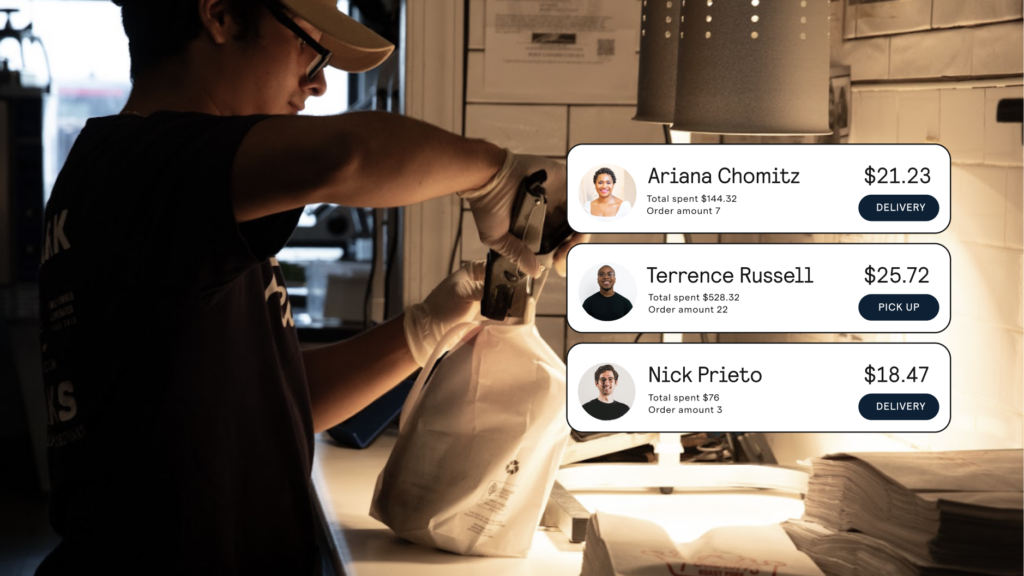
Restaurant marketing trends will continue to evolve because customer expectations constantly change—the key to success isn’t trying to keep up with everything, but having a flexible restaurant marketing strategy that lets you test, learn, build, and adapt quickly.
Start with small experiments to see what works
You don’t need to try out every new restaurant marketing trend to stay competitive. The smartest approach is the test-and-learn method.
Here is the simplest way to get started:
- Choose one new strategy (like shooting short-form video or running a user-generated content contest)
- Give it 30 days to perform
- Measure the results and see if it actually moved the needle
- If it works, make any adjustments you need to make, then run it again at a larger scale
Think of it like testing new dishes on your menu—it’s better to try it out as a special to see if customers like it before committing it full-time to your menu.
Marketing works the same way. Try, learn, adjust.
You need direct ordering to build your marketing foundation
If you don’t own the path to the order, you don’t own the relationship with the guest. That’s why direct online ordering is no longer optional—it’s the foundation every other marketing effort is built on.
When guests order directly from your restaurant’s online ordering system, you gain access to the most valuable asset in marketing: first-party data.
Names, emails, order history, repeat behavior—everything you need to understand your diners and bring them back. Without direct ordering, that data lives with someone else.
Direct ordering shifts your marketing from reactive to proactive. Instead of relying on social platforms or third-party apps to reach people, you now have a channel you control—where every click, every message, and every promotion builds equity in your brand.
Owning the ordering channel doesn’t just improve conversions. It gives you the power to turn a first order into a repeat relationship.
Adaptability matters more than budget
Years ago, big marketing budgets gave restaurants a serious advantage, but with social media, local SEO tactics, and the internet in general, the playing field has changed.
What matters is creativity, agility, and authenticity—not spend.
The restaurants that stay competitive are the ones that stay curious. They try new tools, adapt their messaging, and learn from both successes and setbacks.
If a strategy isn’t working, drop it.
If it’s something that’s performing well, do more of it.
The true mindshift happens when you:
Stop asking “What should we be doing?”
And start asking, “What’s working well that we can do more of?”
The restaurants that keep winning aren’t always the biggest.
They’re the ones who stay in motion.
The Road Ahead for Restaurant Marketing
The restaurants that succeed this year won’t be the ones doing the most marketing—they’ll be the ones doing the right marketing. Stay focused, stay flexible, and build what lasts: direct relationships with the guests who already love what you do.
Contact ChowNow to learn how Direct Online Ordering and a Rewards Program can help you put these marketing trends into action—while keeping full control of your customer data and your margins.
Restaurant Marketing Trends Frequently Asked Questions
How do you market a restaurant in 2026?
Marketing a restaurant in 2026 means focusing on channels you own, like your restaurant website, direct ordering, and email, so you can stay visible without relying on third-party platforms. The most successful restaurants combine digital tools with a focus on storytelling, personalization, and local relevance, while testing one or two new strategies at a time to see what really works.
How can small restaurants use AI without big budgets?
Small restaurants can use AI as a time-saver, not a complicated marketing upgrade. AI can write social captions, emails, and promotional messaging and help analyze order and customer behavior to reveal what drives repeat visits. Instead of adding more work, AI helps restaurants stay consistent with marketing, even without a large team or budget.
How does sustainability impact diner loyalty?
Sustainability builds diner loyalty because guests increasingly support restaurants that reflect their values. When a restaurant communicates how it reduces waste, sources ingredients responsibly, supports local partners, or makes thoughtful operational changes, it strengthens credibility. Diners don’t just want a great meal; they want to feel good about where they spend their money. Transparency builds trust, and trust turns a one-time visit into a habit.
What makes local marketing more effective than national campaigns?
Local marketing works better because it targets the people who are close enough to your restaurant that they will visit or place an order online. Local marketing means showing up in local searches, on online map listings, and in neighborhood-focused social media content, putting your restaurant in front of diners who are ready to decide where to eat and ready to order. National campaigns reach more people, but it doesn’t matter because they aren’t close enough to visit your restaurant.
How can restaurants encourage more user-generated content?
Restaurants can encourage user-generated content by making sharing effortless and rewarding. A simple ask on menus, signage, or takeout packaging—paired with a branded hashtag—gives diners a clear prompt. Featuring guest photos or videos on the restaurant’s own social accounts builds excitement and recognition. When guests feel noticed and appreciated, they naturally want to share their experience, and every post becomes social proof that attracts new diners.
